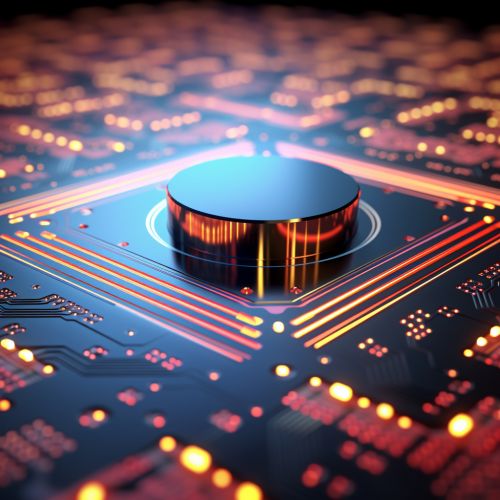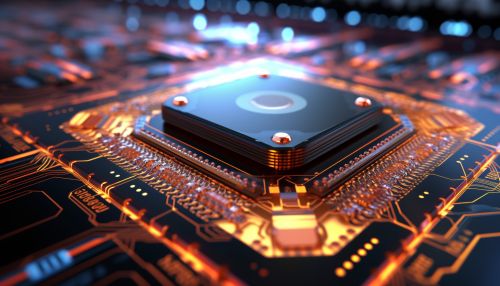Semiconductor Diode
Introduction
A semiconductor diode is a two-terminal electronic component that conducts current primarily in one direction. It has low resistance in one direction, and high resistance in the other. The term "diode" is derived from "di-ode", which means a device with two electrodes. The diode is one of the simplest of the semiconductor devices, but its application and influence in electronic and electrical circuits are far-reaching.
Structure and Operation
A semiconductor diode is made from a single piece of semiconductor material. This material is doped, or impregnated, with impurities to create a region of excess positive charge (holes) and a region of excess negative charge (electrons). The region of excess positive charge is called the p-type semiconductor, and the region of excess negative charge is called the n-type semiconductor. The interface between these two regions is called the p-n junction.
When a voltage is applied across the diode, the positive terminal connected to the n-type region and the negative terminal connected to the p-type region, the diode is said to be forward-biased. In this condition, the diode allows current to flow from the p-type region to the n-type region. If the polarity of the voltage is reversed, the diode is said to be reverse-biased, and it blocks current flow.


Types of Semiconductor Diodes
There are several types of semiconductor diodes, each designed for specific applications. These include:
- Zener diodes: These are used for voltage regulation in circuits. They can operate in the reverse breakdown region without getting damaged.
- Light Emitting Diodes (LEDs): These diodes emit light when they are forward biased.
- Photodiodes: These diodes generate a current when exposed to light.
- Schottky diodes: These diodes have a lower forward voltage drop than normal diodes and are used in high-speed switching applications.
- Varactor diodes: These diodes are used as voltage-controlled capacitors.
- Tunnel diodes: These diodes are used in high-speed switching and microwave frequency applications.
Applications of Semiconductor Diodes
Semiconductor diodes are used in a wide variety of applications in electronics and electrical engineering. Some of the common applications include:
- Rectification: Diodes are used in power supplies to convert alternating current (AC) to direct current (DC).
- Voltage regulation: Zener diodes are used in voltage regulator circuits to provide a constant output voltage.
- Signal modulation: Diodes are used in radio and television receivers for demodulating amplitude modulated signals.
- Light emission: LEDs are used in a variety of applications for light emission, including display technology, lighting, and optical communication.
- Photovoltaic cells: Photodiodes are used in solar cells to convert light energy into electrical energy.
Conclusion
Semiconductor diodes are fundamental components in modern electronics and electrical engineering. Their ability to control the flow of current in one direction makes them indispensable in a wide range of applications, from power supplies to communication systems. Despite their simplicity, they play a crucial role in the operation of complex electronic systems.
